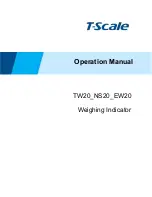
Serial Interface Manual
•
TLS2 Monitoring Systems
Part No. 577013-767, Revision H
1
1.0
INTRODUCTION
The serial RS-232 interface is used to connect the system to a controlling computer, a display terminal (CRT),
or a printing terminal. A modem can be connected directly to the system to provide telephone line access.
NOTE: The software versions for these systems vary depending on when they were purchased and if software
upgrades have been installed. The version in which each function code first appeared is indicated in a box next
to its description in Section 7.
2.0
HARDWARE CONNECTIONS
The RS-232 interface for Port 1 is accessed via a 9-pin D-connector located on the bottom of the console. The
RS-232 interface for Port 2 is accessed via the 5-pin J-9 connector inside the console.
2.1
RS-232
Port 1 is a panel mount, 9-pin female type D-connector, wired in the DCE configuration. A modem (DCE) may
be connected to the interface using a null cable which reverses the wires for the transmit/receive signals. A
computer or serial printer (DTE) may be connected with a straight-through cable. Port 1 does not require or
activate any hardware handshaking signals unless this option has been selected in the setup menu. RS-232
signals for Port 1 are wired to the 9-pin female D-connector as follows:
Port 1
PIN
1
(DCD) Data Carrier Detect
2
(RXD) Data Received by the console
3
(TXD) Data Transmitted from the console
4
(DTR) Data Terminal Ready
5
(GND) Signal Ground
6
(DSR) Data Set Ready
7
(RTS) Request To Send
8
(CTS) Clear To Send
9
(N/C) Not connected
RS-232 signals for Port 2, which does not include any hardware handshaking signals, are wired to the 5-pin
internal J-9 connector as follows:
Port 2
PIN
1
(TXD) Data Transmitted from the console
2
(RXD) Data Received by the console
5
(GND) Signal Ground (common return) and Chassis





































